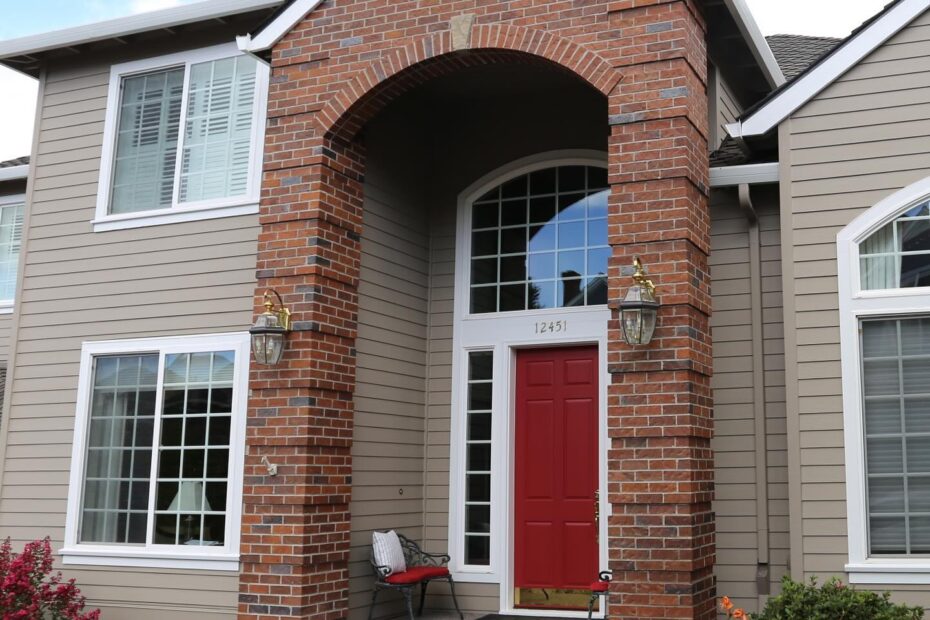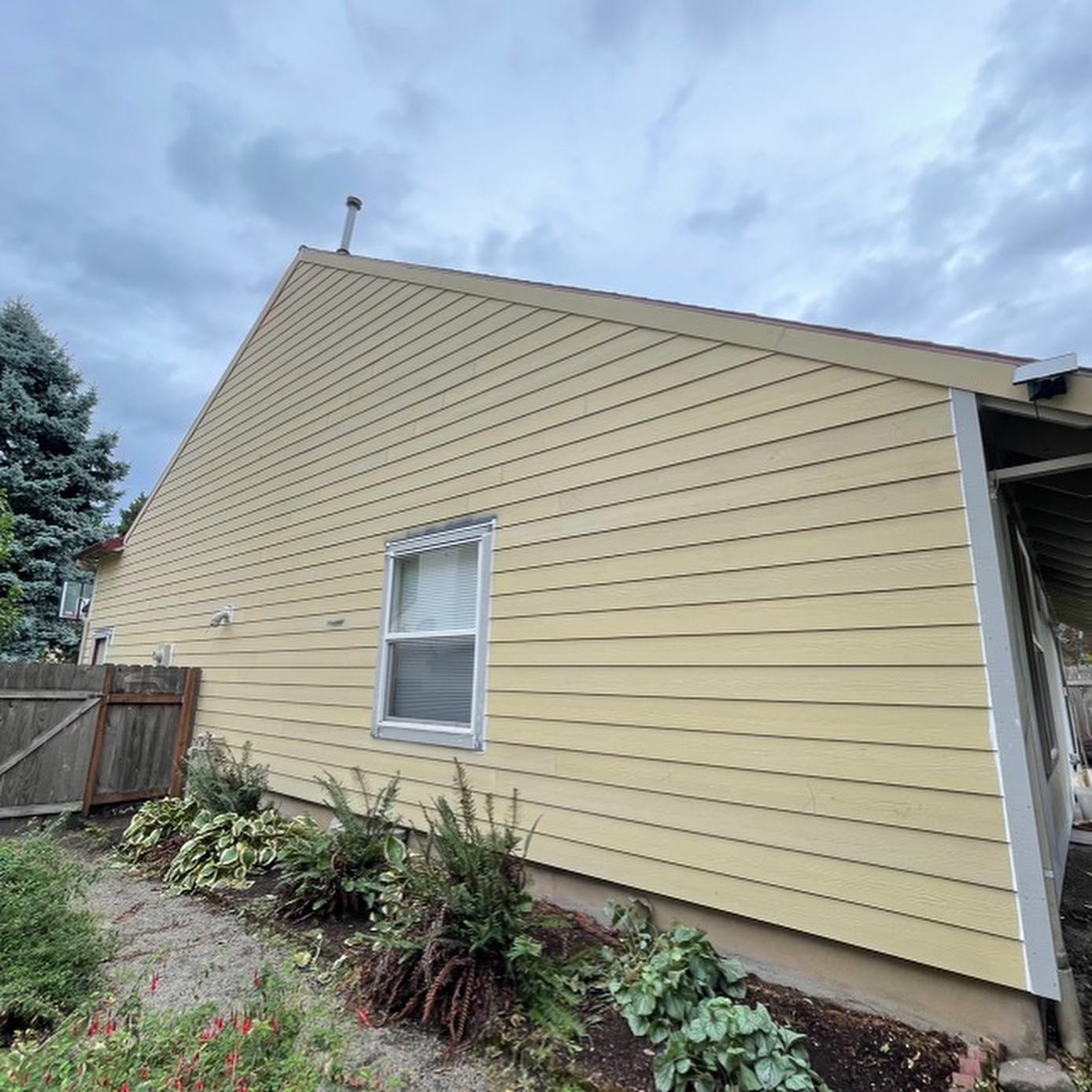Replacing your home’s siding is a major home improvement project that offers numerous benefits, from enhancing curb appeal to improving energy efficiency. Over time, even the most durable siding materials can show signs of wear and tear, and knowing when to replace them is crucial to protecting your home from the elements. This guide will walk you through the key aspects of siding replacement, including recognizing when it’s time to replace your siding, preparing for the project, and understanding what to expect during installation.
At LADA Exteriors, we’ve been helping homeowners across Portland, Beaverton, Tigard, Lake Oswego, Sherwood, Tualatin, Hillsboro, and Vancouver, Washington with their siding needs for over 25 years. Whether you’re addressing damage, updating your home’s style, or increasing its energy efficiency, we’re here to make the process seamless and stress-free.
When Should You Replace Your Siding?
Knowing when to replace your siding is essential for protecting your home and maintaining its efficiency. Over time, constant exposure to the elements—rain, wind, and fluctuating temperatures—can cause the siding to deteriorate. This deterioration affects your home’s appearance and leads to serious issues like water damage, structural problems, and increased energy bills. Recognizing the early signs of siding failure can save you time, money, and hassle in the long run.
One of the most obvious signs that it’s time to replace your siding is the presence of cracks, holes, or gaps. These openings can allow moisture to seep in, which can lead to rot and even compromise the structural integrity of your home. Warped or buckled siding is another clear indicator of trouble. While it might seem like a purely cosmetic issue, it often points to hidden moisture problems beneath the surface, which need immediate attention.
If your siding’s color has faded significantly or the paint is peeling, it could mean the material has reached the end of its lifespan. Paint and finishes play a crucial role in protecting siding, so when they wear down, the siding becomes vulnerable to the elements. Similarly, the persistent presence of mold, mildew, or algae on your siding signifies trapped moisture. This looks unappealing and can lead to further damage if not addressed promptly.
Another key warning sign is a noticeable increase in your energy bills. Siding plays a significant role in insulating your home, and when it’s no longer effective, drafts and heat loss can cause your HVAC system to work harder. If you’re seeing a consistent rise in heating or cooling costs, it might be time to consider replacing your siding to restore your home’s energy efficiency.
If you’ve noticed any of these issues with your siding, it’s important to consult a professional for an assessment. A trusted contractor can evaluate the extent of the damage and recommend the best solution to protect and enhance your home. Taking action early can prevent minor problems from turning into costly repairs and ensure your home remains well-protected for years.
Replacing your siding is a worthwhile investment that offers numerous benefits for your home. First and foremost, new siding provides improved protection against the elements. It acts as a strong barrier, shielding your home from water damage, pests, and harsh weather conditions. This added layer of defense helps maintain your home’s structural integrity and ensures long-term durability. Additionally, fresh siding instantly enhances curb appeal. By updating your home’s exterior, you can boost its aesthetic charm, making it more attractive to potential buyers and significantly improving its overall value.
Another major advantage of replacing your siding is increased energy efficiency. Modern siding materials are often equipped with advanced insulation properties that help reduce heat loss and improve indoor comfort. As a result, you’ll enjoy lower energy bills and a more sustainable home. Furthermore, new siding adds to your home’s resale value. Replacement siding is one of the most effective home improvements in terms of return on investment, recouping a significant portion of its cost when you sell. New siding reduces maintenance needs. Unlike older, deteriorating siding that often requires frequent repairs, modern materials are designed for long-lasting performance, saving you both time and money on upkeep.
Proper preparation is essential for ensuring a smooth siding replacement process. Begin by evaluating your needs to determine whether a full replacement or partial repairs are necessary. This decision will depend on the extent of the damage and the age of your current siding. Next, set a budget that accounts for materials and professional installation. Costs can vary based on the size of your home, the type of siding you choose, and labor rates.
Hiring a reliable contractor is a critical step in the process. An experienced professional will ensure the job is done correctly and efficiently. Look for a contractor with a strong reputation, proper licensing, and expertise in handling the specific siding material you’ve selected. Finally, plan for some disruption during the project. Siding replacement is a significant undertaking that can take several days, so be prepared for noise and limited access to certain areas of your property while the work is being completed. Proper planning and a skilled contractor will help ensure your siding replacement is a seamless and successful investment in your home.
What to Expect During Siding Replacement
Understanding the siding replacement process can help you feel more prepared and confident as you begin your project. The process typically starts with the inspection and removal of your old siding. During this phase, the existing siding is carefully removed, exposing the underlying structure. The contractor will then inspect the exposed areas for any signs of damage or rot. If repairs are necessary, they will be addressed to ensure the new siding has a stable and secure foundation.
Next, a weather-resistant barrier, such as house wrap, is installed. This step is crucial for protecting your home from moisture and enhancing its energy efficiency by creating an additional layer of insulation. After this barrier is in place, the new siding is installed. This is done according to the manufacturer’s specifications to ensure a secure and durable fit. During this stage, proper flashing and sealing are critical to prevent water intrusion and maintain the integrity of the installation.
Once the siding is securely in place, the contractor will add finishing touches to complete the project. This may include installing trim, applying caulking, and, if necessary, painting to achieve a polished and cohesive look. The contractor will conduct a thorough inspection to ensure the siding installation meets quality standards and your satisfaction. This final step ensures that every detail has been addressed and your home is protected and looking its best.
How to Extend the Life of Your New Siding
After investing in new siding, proper care and maintenance are essential to extend its lifespan and keep it looking its best. Regular cleaning is a simple yet effective way to maintain your siding. Washing it annually with a garden hose or pressure washer helps remove accumulated dirt, debris, and mildew, preserving its appearance and preventing long-term damage.
In addition to cleaning, it’s important to inspect your siding periodically for any signs of damage, such as cracks, gaps, or wear. Addressing these issues promptly can prevent more significant problems, like moisture intrusion or structural damage. Trimming your landscaping is another key maintenance step. Overgrown shrubs and tree branches can scratch or damage your siding, so keeping them trimmed ensures your siding remains in top condition.
Lastly, pay attention to your gutters and downspouts. Make sure they are clean and functioning properly to prevent water from overflowing and spilling onto your siding, which can lead to moisture-related issues. By following these simple maintenance tips, you can protect your siding investment and enjoy its benefits for years.
Why Choose LADA Exteriors for Your Siding Replacement?
At LADA Exteriors, we understand that replacing your siding is a significant investment, and we’re committed to delivering exceptional results. With over 25 years of experience serving Portland, Vancouver, and surrounding areas, we specialize in professional siding installation that enhances your home’s beauty and protects it from the elements.
As a James Hardie Preferred Remodeler, we offer industry-leading materials and craftsmanship to ensure your siding replacement exceeds expectations. Whether you’re looking to boost your home’s curb appeal, improve energy efficiency, or address damage, we’re here to guide you every step of the way.
Contact us today to schedule a consultation and learn more about our siding replacement services. Let us help you transform your home with siding that combines style, durability, and long-lasting performance.

